A Review of Raven Mack’s Life in Chaotic State…Then Silence
The Review
I started following “Dirtgod” Raven Mack on Twitter several years ago, when he was in the middle of a sequence of “world haiku,” in which he characterized, in three-line stanzas, over several weeks, alphabetically and usually hilariously, all the nations of the world, most of which he knew absolutely nothing about. It was funny stuff. But then I kept following him because the best of his work—the real stuff—was what I needed to read, to help me make sense of what seemed to be an increasing gap between what I’d learned to value in life and the implied values of the city in which I currently reside.
I also liked the fact that we hail from the same geographical place: southside/central Virginia, with its weird mix of terrifying rural poverty, old-South plantation wealth, and nouveau-riche techno-transplants, where multi-million dollar colonial estates stand a short walk from dilapidated shacks, and gleaming new university research centers abut project housing. Those are the contradictions and tensions of class, race, and circumstance that he explores and critiques in his latest published work, Life in Chaotic State…Then Silence, which chronicles in verse a society in which, for less-moneyed denizens, the “compulsion to create gets / mostly denied by real life,” while the “creative class tends to chase / dreams with safety net.”
Lacking that safety net, but still driven by compulsion, Raven Mack up and left town, for an Amtrak-powered “large clockwise spiral across / the American continent.” This new volume collects renga composed on that journey, and proves the maxim that sometimes the best way to say something about a place is to leave it behind for a while. Raven does that here, reflecting as his train winds across the country on both the topical (white supremacists in Charlottesville, for example) and the abstract (what is “progress?” What is “success?”) The stanzas range from offhand musings and casual train-window observations to scathing, profane condemnations of our blind acceptance of American mythologies, often within a few lines of each other:
wild and wonderful
promise of deep southern West
Virginia awaits
let us disappear, and build
fresh chaos, elsewhere, for now
This leads, just a few lines later, to:
psychic slavery
born from meritocracy
myths sown early on
justice remains a social
construct, never seen in wild
And shortly thereafter, to the seemingly inevitable conclusion of this line of reasoning:
most people fake as
fuck, selfish, yet personal
brand as most righteous
fuck y'all fake motherfuckers
FUCK Y'ALL FAKE MOTHERFUCKERS
This comparison of the wild and the artificial, of the real and the inauthentic, informs much of the verse in Life in Chaotic State, and as the train rolls across the American landscape, the poet interrogates the difference between what we want to believe is true about our society—what we’re told about American freedom and opportunity—and the way things actually work. In conversation with a recently released felon, called here “teardrop,” who “got fucked up and…burglarized a chain / taco restaurant,” Raven observes that
sometimes poor choices
are our only escape route—
who am I to judge?
no idea how I escaped
similar fates—just dumb luck
difference between
failure and success is fine,
often lacks merit
poor people make poor choices,
one can't escape their own mind
This is verse about a lot of things: money, power, race, class, love, life, and death all are subject to Raven’s unforgiving gaze. But as I accompanied him on his rail journey, down to Georgia, across to California, up to the Pacific Northwest, then back east, home again, I realized how much of the book was really about the production of art, and even more the control of it. In our late-capitalist “digital fog,” as Raven calls it, of social media presences and personal brands, while “writing with thumbprints / upon cracked screen taped in place, / secondhand smartphone,” the gulf between “legitimate” art and the unworthy or inconsequential seems lately to have grown, not lessened, despite the abundance of online outlets for creative expression.
Maybe the haves are simply moving the goal posts farther away from the have-nots. Wouldn’t be the first time. While paused at a stopover outside a Los Angeles suburb, Raven takes a moment to
snap passings with my
shitty Fujifilm Finepix,
camera conscious
better equipment means true
artist, more legitimate
And despite nearing his own rail stop, which itself is a strong marker of legitimacy—he’s only a “few hours away from / redwoods residency as / ’emerging writer'”—that legitimacy still seems unattainable:
45—been writing whole
life, but with poor equipment
imposter syndrome
born from meritocracy
myths planted in mind
Like the convict “teardrop,” Raven can’t escape his own mind, even as he names those myths and struggles against them. So what can the illegitimate artist do? Wait for the end of it all, maybe, when the psychic slaves will finally overthrow their masters:
one day your power
grid will fail; the fog depends
on batteries' buzz
once the fog clears, we'll shine our
guillotines with devil blood
But until then, the compulsion to create remains. It’s the only way forward:
too poor for hobbies
other than writing nonsense
and also fucking
...
give me poetry
written by dirtbags hiding
out in bathroom stalls
give me poetry written
while riding the bus nowhere
give me poetry
grounded in taking each step
with actual feet
feeling each crack in sidewalks
never seen from above clouds
That’s real. And it got me to thinking…
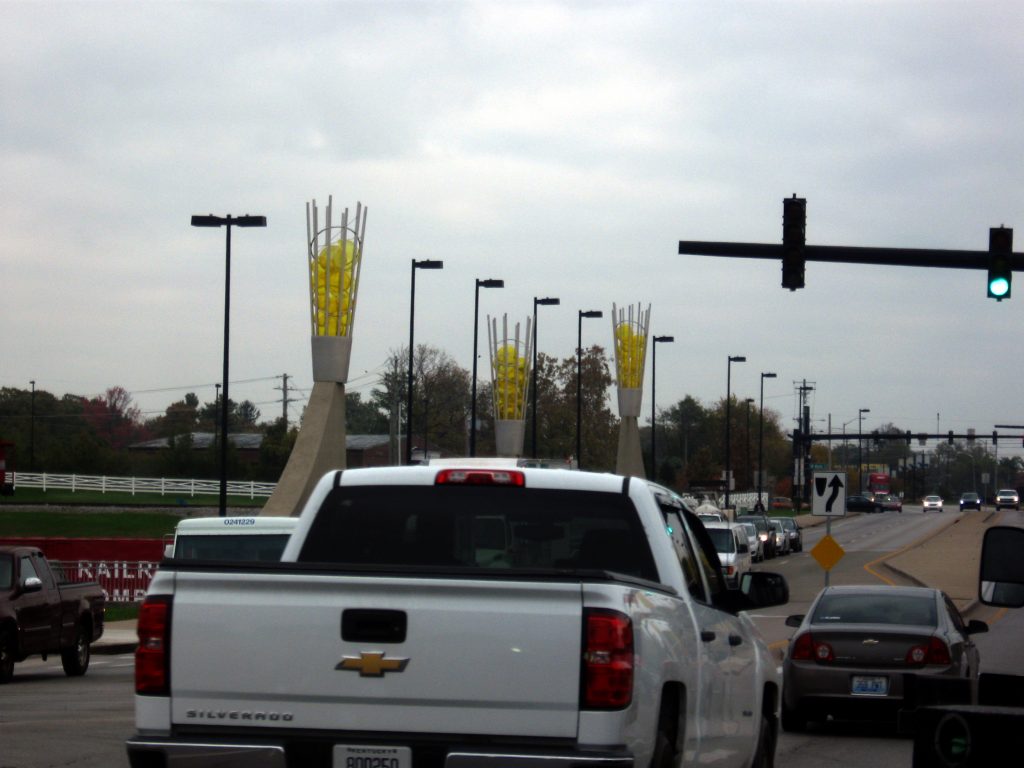
The Bridge
A few weeks ago, while struggling to drive south to north across the downtown of our city, I sat in traffic on the Oliver Lewis Way Bridge, behind the usual long line of cars looking to turn right onto Main Street. It was a sunny afternoon, and the glare off the great golden balls of the public art installation flanking the bridge made me squint.
As I had many more minutes to kill in this traffic (we didn’t need the Jefferson Street bridge anymore, remember?) I began to contemplate the six sculptures, titled “Origins,” as I never had before, though the project had been installed more than three years ago. I stared hard at the reaching spikes, meant to evoke the staves of a bourbon barrel, and the yellow bubbles within them, intended to describe the flames of the charring process. For what seemed an eternity I gazed at the art, at every glint and every shadow, every line and every contour. I immersed myself in it.
And then I asked myself, “really, what the hell is that?”
The official version is that the spikes and bubbles are an “abstracted interpretation of burning bourbon barrels,” according to Andrea Fisher, of Transylvania’s Morlan Gallery, who opined that the work “is a perfect gateway into the Distillery District and the classical element of flame is an appropriate counterpoint to the waters of Town Branch running below the Oliver Lewis Way Bridge. Furthermore, the light sculptures resemble glowing torches, emblematic of hope, energy, and passion, wonderful descriptors of Lexington’s current zeitgeist.”
Oh—it’s branding. It’s emblematic of the zeitgeist. Whose zeitgeist? LexArts’s. Pohl Rosa Pohl’s. A gallery director’s. A council member’s. The assembled gatekeepers of what’s “appropriate” and legitimate—and what’s not.
In the days surrounding Rich Copley’s Herald Leader blurb, announcing the grand opening of “Origins,” the newspaper also ran stories about:
- $18 million in tax breaks for the Noah’s Ark park
- tuition increases at state universities
- funding cuts and hiring freezes at state universities
- Matt Bevin delaying a two-year college scholarship fund
- Matt Bevin vetoing various parts of the proposed state budget, including $40 million in need-based college scholarships
One might say that the real zeitgeist actually involves funneling money from higher education to counter-factual theme parks and sticking students with the bill. And don’t forget, as my colleague Danny Mayer continues to chronicle, the tens of millions of dollars the city has dumped into various studies and subsidies for the renovation and construction of the 21C building, Rupp Arena, and CentrePointe, all while paying lip service to the problem of northside gentrification and the loss of affordable housing.
Perhaps the more appropriate sculptures to plunk on top of the OLW bridge would be granite likenesses of Matt Bevin, Dudley Webb, and Moses, each standing astride the fallen figure of either a displaced low-income Lexingtonian or an underprivileged, debt-ridden college student.
But that doesn’t fit the brand. The brand is bourbon. Or horses, in other years. The art must reflect the brand. Even if the art is dingy yellow bubbles surrounded by irregular spikes, created by an artist from far-away Colorado. The gatekeepers—Lexington’s “creative class”—have deemed it so. The myth of meritocracy remains intact.
Maybe one day everything will be different. A storm will gather and clear away the fog. Not yet.
the power flickered,
but never went out; for now,
the grid is still locked
one day, the buzzing will stop,
then the sirens, then silence
Fuck y’all fake motherfuckers.
Life in Chaotic State…Then Silence is available for purchase at Amazon, and by contacting the author directly via his website or at P.O. Box 585, Charlottesville, VA 22902. Follow Raven Mack on Twitter: @_raven_mack.
Portions of this article first appeared in an Amazon customer review I submitted on October 23, 2019.

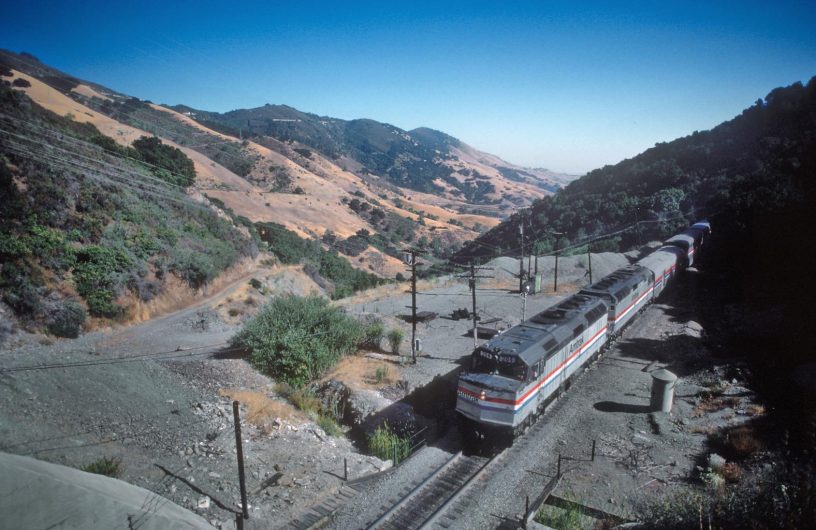
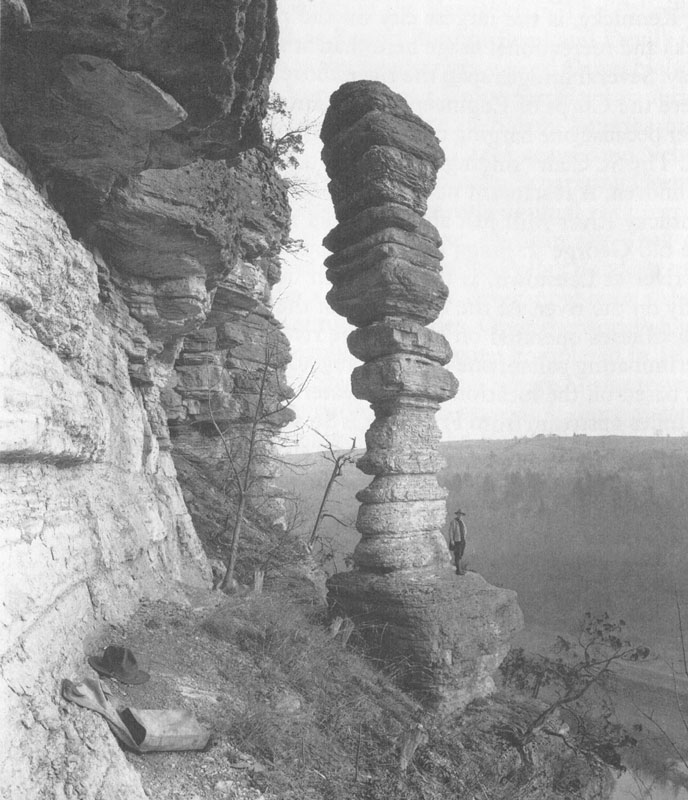
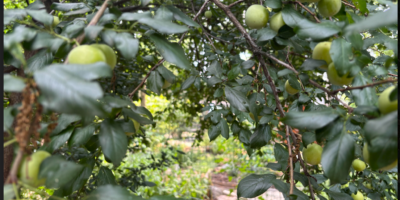
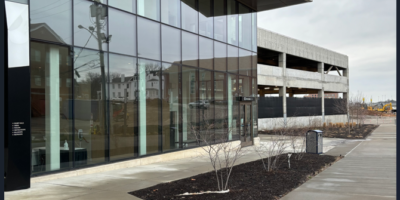
Leave a Reply